This content represents the writer’s opinions and research and is not intended to be taken as financial advice. The information presented is general in nature and may not meet the specific needs of any individual or entity. It is not intended to be relied upon as a professional or financial decision-making tool.
ERC20 is the most common token standard on Ethereum and the cryptocurrency at large. 2020 brought the Binance Smart Chain, a blockchain that has proven to be a worthy rival to Ethereum. Even so, it did not come alone, as it has its own token standards besides Ethereum’s.
BEP20 is a Binance Smart Chain token standard that is compatible with ERC-20 and BEP-2. It is simplicity and cross-chain capabilities make it the preferred option for most beginner developers.
Much remains to be discovered about this token standard and its relationship to ERC-20. We will cover everything about it, including its wallet and significant differences with the parallel BEP2 standard. So, here is everything you need to know about BEP20 and its applications in the blockchain industry.
Key Differences
BEP2 and BEP20 are both token standards on the Binance Chain, but they have some key differences.
- Token Type:
BEP2 tokens are native tokens on the Binance Chain, which means they are issued and traded directly on the chain. BEP20 tokens, on the other hand, are ERC20-compatible tokens on the Binance Smart Chain, which means they are compatible with the Ethereum network. - Network:
BEP2 tokens are built on the Binance Chain, which is a standalone blockchain developed by Binance. BEP20 tokens, on the other hand, are built on the Binance Smart Chain, which is a separate blockchain that runs in parallel with the Binance Chain. - Interoperability:
BEP2 tokens are not directly interoperable with other blockchains or networks, while BEP20 tokens are designed to be compatible with the Ethereum network, which means they can be used in Ethereum-based applications and traded on Ethereum-based exchanges. - Transaction fees:
BEP2 tokens require a small amount of Binance Coin (BNB) to pay for transaction fees, while BEP20 tokens require BNB or Binance USD (BUSD) to pay for transaction fees. - Usage:
BEP2 tokens are typically used for trading and payments within the Binance ecosystem, while BEP20 tokens are used for a wider range of applications, including decentralized finance (DeFi) and non-fungible tokens (NFTs).
In summary, BEP2 and BEP20 tokens are both token standards on the Binance Chain, but they have different use cases and technical specifications.
If you’re interested in learning more about BEP2 and BEP20, continue reading our comprehensive guide on the subject.
Table of Contents
What is BEP20?
Binance created BEP20 in 2020 to run in parallel but independently from its blockchain. The token standard has smart contract features that Binance’s token standard, BEP-2, doesn’t have. Yet, it does not overburden the blockchain, giving it an attractively quick processing time.
BEP20 is a standard that defines how tokens can be spent, who spends them, and how they are used. Its most important feature is its compatibility with Ethereum’s ERC-20 and BEP-2 from BNB Beacon Chain. It has a lot in common with both standards, which makes it the best choice for developers who want to use their features.
This standard shares the following similarities with ERC-20:
- TotalSuppy: it sums up all the tokens in a blockchain smart contract
- BalanceOf: shows the number of tokens in a user’s address.
- Name: gives an actual, readable name to a token.
- Symbol: gives a ticker symbol (a unique series of letters) to your token.
- Decimal – it sets how many decimal places to divide your token.
- Transfer – it allows BSC users to transfer tokens with the owner as the invoking party
- TransferFrom – it allows persons or approved smart contracts to transfer tokens
- Approve – limits how many tokens a smart contract can withdraw from your balance
- Allowance – shows the balance from an authorized smart contract transaction
These similarities allow developers to create peg tokens and peg them to tokens on the ERC-20 protocol. It also supports the development of stablecoins and utility tokens.
BNB fuels all BEP20 token transfers or transactions the same way it does for the Binance Beacon Chain. As a result, validators are incentivized to include all the transactions on the Binance blockchain.
BEP20 is the preferred option for smart contracts and automated transactions. It lays the groundwork for the launch of DEXs on Binance, which is currently restricted on the Binance Chain.
Essential Characteristics of BEP20
A full grasp of this token standard requires understanding its parameters. The latter defines the capabilities of tokens created using the standard. They include the following:
Blacklist
It allows developers to ban a malicious address or add multiple ones to a blacklist.
Can Pause
This parameter allows users to pause all operations if there is a malicious attack or a compromised platform. The creator and the user can initiate a freeze on all transactions to contain the malicious attack or vulnerability.
Can Burn
This deflationary parameter specifies if creators can burn tokens to reduce their supply over time.
Can Mint
This inflationary parameter allows creators to mint new tokens and increase the supply if necessary.
Popular BEP20-based Projects
Given its standard for creating tokens, it is safe to say that developers have created some successful tokens with it. Moreover, tokens fuel wallets, dApps, and other projects.
The following tokens were created with the BEP20 standard: CAKE, BNX, BSW, RACA, DOME, ALPHA, HERO, SFUND, BAKE, ALPINE, LAZIO, SANTOS, etc.
The Binance Smart Chain BEP20 standard has led to some successful projects that are not tokens. They include the following:
This automated market maker runs on the BNB Smart chain with multiple functionalities. It is a decentralized exchange with finance and security services.
This decentralized app can be used to trade, collect interest on yield farms, hold lotteries, and connect NFT marketplaces. It is among the most active platforms on the Binance Smart Chain.
This project built its token according to the BEP20 standard protocol. It is a decentralized finance (DeFi) lending platform for users to lend and borrow cryptocurrencies. Furthermore, it uses collateralization for this function.
Lenders on VENUS can earn an annual percentage yield from their deposited funds. That works because of the automated algorithmic lending for supported cryptos.
Transactions on VENUS are instant, and there are no intermediaries. That allows for lower fees and more incentivization for the lenders. Also, XVS provides governance authority to the holders.
This play-to-earn game works off the Binance Smart Chain and might be the most popular. Players own and can leverage their assets to earn an income from the gameplay. That includes the weapons and characters.
The speed and efficiency of the Binance Smart Chain give this game an edge over others. Also, players can sell or swap their in-game assets (NFTs) on the CryptoBlades marketplace. It is an all-in-one ecosystem for players and traders who want to enjoy gaming while earning on the side.
The BEP20 Wallet

A BEP20 wallet stores tokens on the BNB Chain. It allows users to send and receive BEP20 tokens and interact with other decentralized applications on the Chain.
Often, a BEP20 wallet is non-custodial, meaning you own and control the wallet. That is in contrast to custodial wallets, where the provider has control.
You can link up with other blockchains using your unique address from the wallet. This address is where you store and encrypt cryptocurrencies, while validators or miners get transaction fees. You can also manage and store other types of cryptocurrencies and digital assets, such as NFTs.
The BEP20 wallet supports swapping and sometimes staking, which brings us to the benefits of having one. They include the following:
- It supports various cryptocurrencies.
- Users can keep their accounts and transactions confidential.
- It allows easy transfers and usage.
Components of the BEP20 Wallet
Any BEP20 wallet has three essential components that provide structure. They provide all the elements a user needs to stay anonymous. In other words, no one will know you as the wallet owner.
The components are as follows:
- The Passphrase
BEP20 will always provide a unique passphrase to every user, which means no two users will have the same. The passphrase consists of 12 random English keywords. You will use it for account recovery and adding a new device.
Assume you began with your smartphone and want to add the wallet to your PC. You will receive a prompt to enter the passphrase.
- The wallet address
The address is a unique sequence of numbers and characters. Wallet users send and receive tokens from their unique addresses. So, all you need is your address to receive coins from someone.
- The private key
A private key is more of a password to your account than a string of numbers and letters. It allows you to connect to your account.
When opening a BEP20 wallet, save this information in a secure place. If you miss the passphrase, you cannot recover your account, and any stored assets will be lost forever.
Popular BEP20 Wallets
Binance.com offers a BEP20 wallet that supports the BEP20 token standard on the Binance Smart Chain. The Binance Smart Chain is a blockchain that enables smart contracts and runs alongside the Binance Chain. Binance.com enables users to deposit and withdraw various assets as BEP20 tokens, such as LINK, USDT, ADA, BAND, BCH, BUSD, BTC, DAI, DOT, EOS, ETH, LTC, ONT, XRP, XTZ, INJ, PAX, SXP, and USDC.
Users can also convert their tokens from other chains to BEP20 tokens using the Binance Bridge service. To access the BEP20 wallet on Binance.com, users have to choose the Binance Smart Chain network when they want to deposit or withdraw any asset.
Users have to be careful not to enter an ERC20 address as a BEP20 withdrawal address or send funds from Binance Chain directly to the BSC deposit address.
Besides Binance.com’s BEP20 wallet, there are other options available such as Trust Wallet and MetaMask. These are software-based wallets that allow users to store and manage their BEP20 tokens on their devices. Users can also opt for hardware wallets if they prefer more security and control over their funds. Ledger Nano X is one of the most reputable hardware BEP20 wallets.
How to open a BEP20 Wallet on Binance.com
1.Log in to your Binance.com account and go to the Wallet section on the top right corner of the screen.
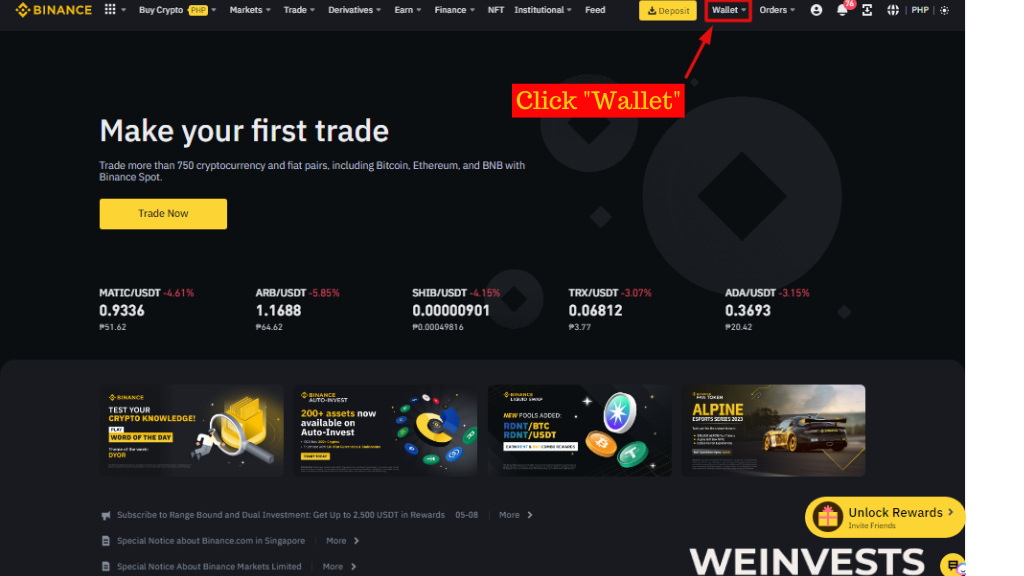
2. Click on Fiat and Spot to see your available assets. You can also use the search bar to find a specific asset that supports BEP20 deposits and withdrawals.
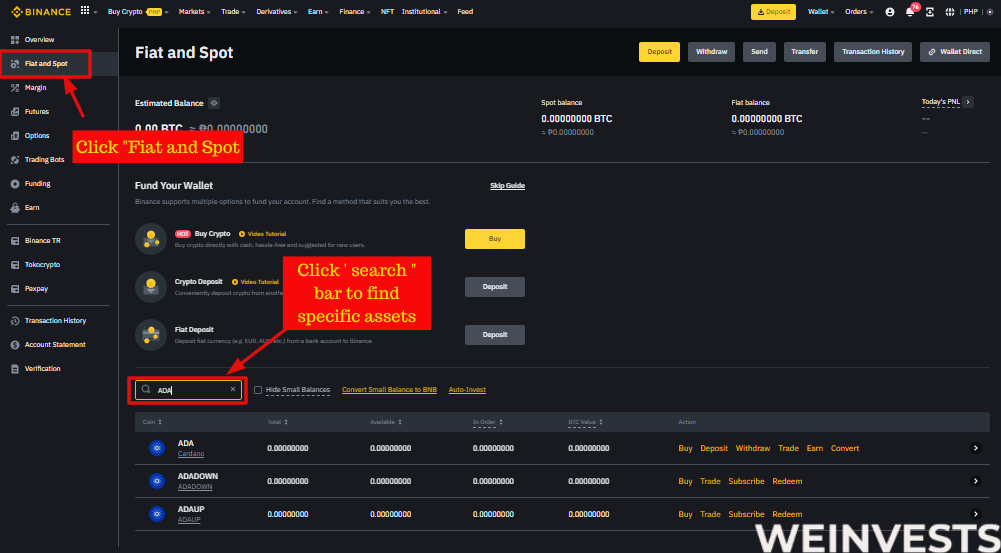
3. Click on Deposit or Withdraw next to the asset you want to use. A pop-up window will appear with different options for networks and addresses.
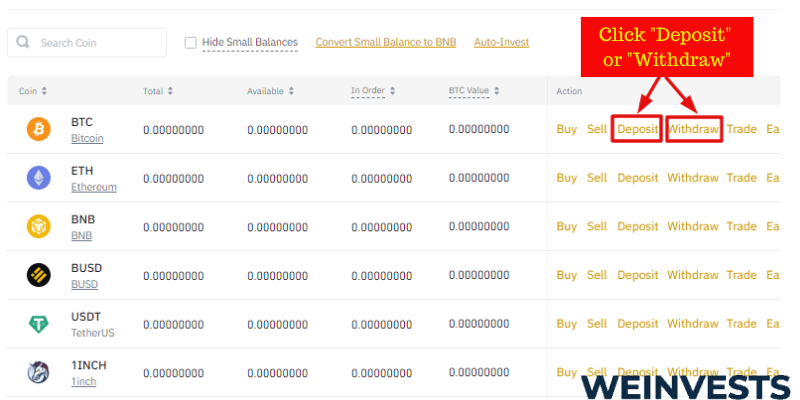
4. Select Binance Smart Chain as the network and copy the address shown below. This is your BEP20 wallet address for that asset. You can also scan the QR code or click Share to send the address to someone else.
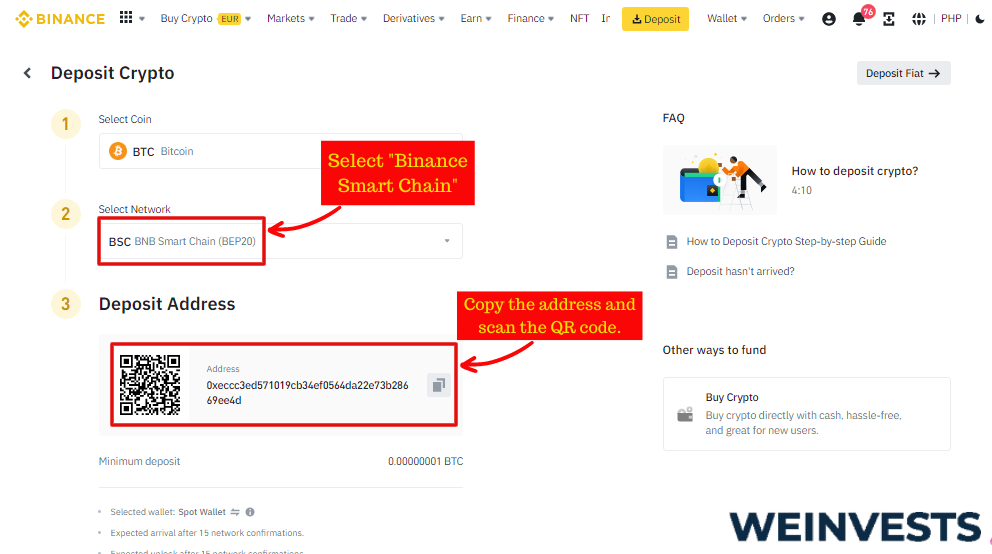
5. To deposit BEP20 tokens, you need to send them from another wallet or platform that supports Binance Smart Chain to your BEP20 wallet address on Binance.com. Make sure you select the correct network and token when sending funds.
6. To withdraw BEP20 tokens, you need to enter the recipient’s BEP20 wallet address and the amount you want to send. Make sure you do not enter an ERC20 address as a BEP20 withdrawal address, as this may result in the loss of your funds. Confirm the transaction details and complete the security verification.
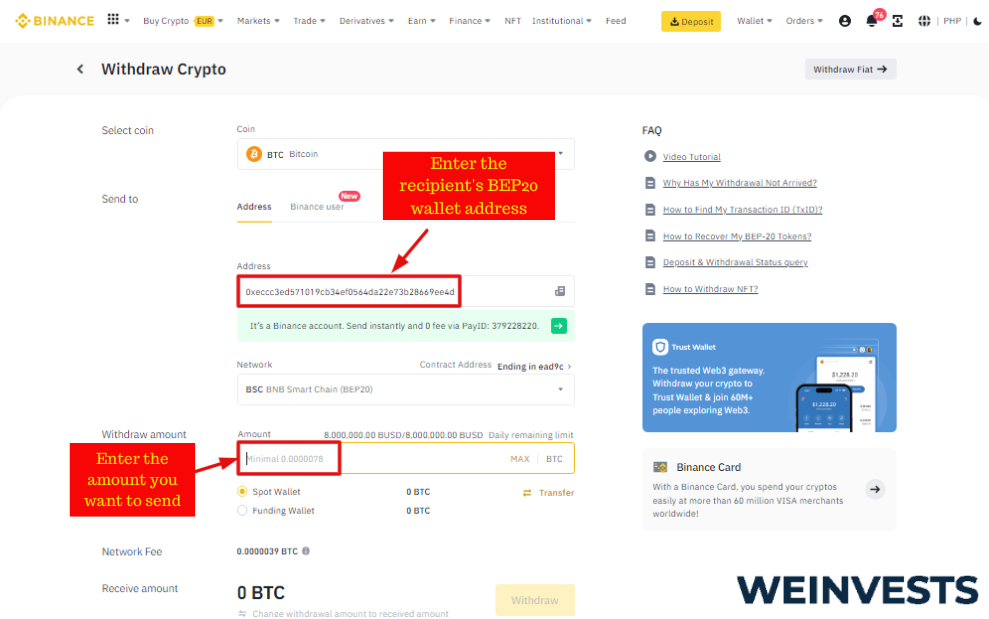
7. You can check the status of your deposits and withdrawals on the Transaction History page under the Wallet section. You can also view your BEP20 wallet balance and transaction history on a blockchain explorer like BscScan
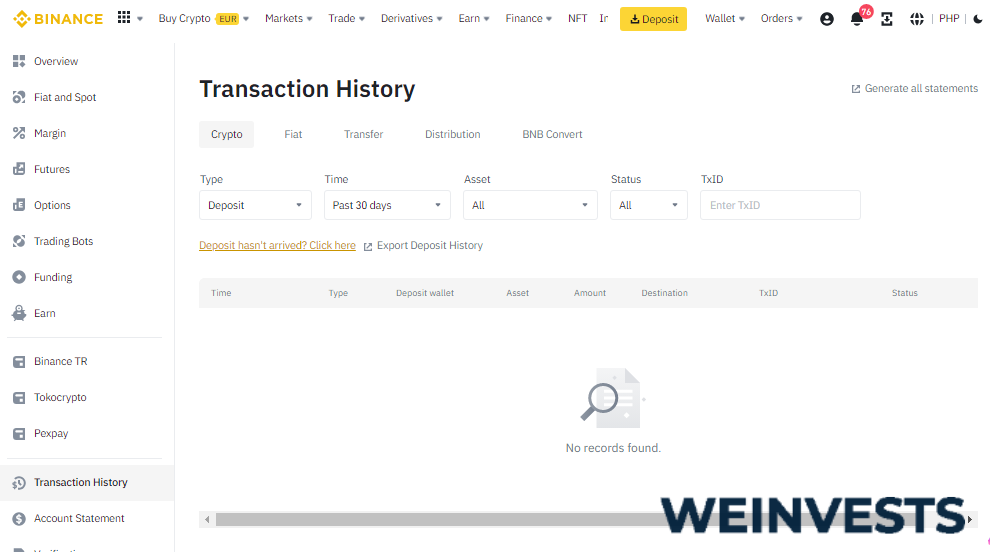
In addition to Biniance.com’s BEP20 Wallet, you can check out the following:
Trust Wallet
Binance’s electronic wallet is one of the most famous, with 5 million users. It provides storage and allows connection with decentralized applications through its dApp browser.
MetaMask
This trusted location lets you use BNB Chain dApps and store BNB and other cryptocurrencies. It is based on Ethereum but also has add-on plugins for dApps.
BEP2 Vs. BEP20: What is the Difference?
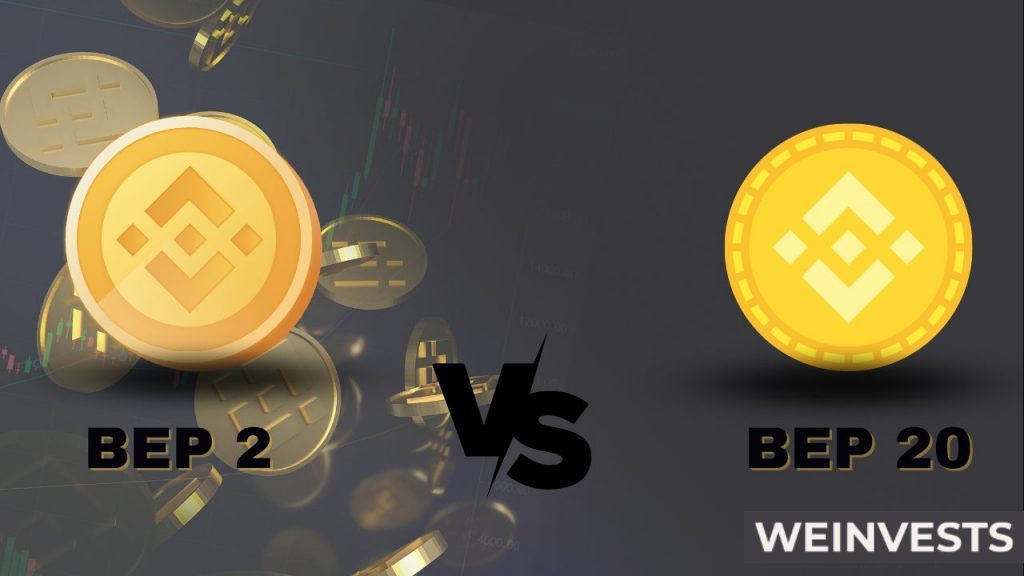
BEP2 serves as the original token standard for the Binance coin, BNB. It works for all transactions on the Binance centralized crypto exchange and decentralized platforms. However, it has a significant restriction.
Users are heavily restricted in how they use BEP2 tokens on other blockchains aside from Binance. That makes it easier for Binance’s centralized and decentralized exchanges to use BNB as transaction fees. Contrarily, the BEP20 tokens function in other Binance applications.
BEP2 tokens are an important part of the Binance Chain, which is the backbone of Binance’s decentralized cryptocurrency transactions. However, it does not support the development of dApps, making BEP2 tokens limited.
The table below summarizes the differences between BEP2 and BEP20
| Criteria | BEP20 | BEP2 |
| Blockchain | Binance Smart Chain | Binance Beacon Chain |
| Smart contract capability | Supports smart contracts on Binance | No support for smart contracts |
| Links with Ethereum | Built on the ERC20 token standard. Hence the compatibility with Ethereum | Zero compatibility with Ethereum |
| Consensus mechanism | Proof of stake | Proof of work |
Bridging the Two Standards
Binance has a dual chain architecture, which is one of its major highlights. The Binance Chain and Binance Smart Chain run parallel, but the dual chain architecture acts like a bridge. This unique mechanism allows blockchains to work together and for assets to move quickly from one blockchain to another.
You need “wrapped” BEP2 tokens to conduct transactions on the Binance DEX. The Binance Bridge makes this possible by wrapping these tokens on the BNB Beacon Chain. BEP20 Bitcoin is a popular wrapped coin, but you can find more bridged tokens.
In the same way, you can put tokens on the Binance Smart Chain and use them in decentralized applications. We have seen bridged Bitcoin, ERC-20, TRC-20, etc. tokens on the BNB Beacon Chain and the Binance Smart Chain. Once you understand the basics, you will flow with both blockchains without any hassles.
Celer Bridge and Any Swap are prominent bridges you can use for this purpose. They allow bridging from Ethereum to Metamask and vice versa. Nevertheless, ensure you have enough ETH to cover the gas fees.
Conclusion
Binance’s smart dual architecture lets it run two separate blockchains simultaneously: the BNB Beacon Chain and the Binance Smart Chain. On one side, we have the BEP2 standard, and on the other, the BEP20 standard. The latter defines users, how they can spend tokens, and how they are used.
BEP20 supports smart contracts and can be used on dApps. BEP2 does not support smart contracts, hence the need for a bridge. Wrapping tokens allows them to be used on the two Binance blockchains.
Popular BEP20 wallets like Trust Wallet allow transactions even with wrapped tokens. Working with BEP20 or BEP2 standards depends on preference. Those who need dApps and Ethereum compatibility should opt for the former.
WeInvests is a financial portal-based research agency. We do our utmost best to offer reliable and unbiased information about crypto, finance, trading and stocks. However, we do not offer financial advice and users should always carry out their own research.
Read More




